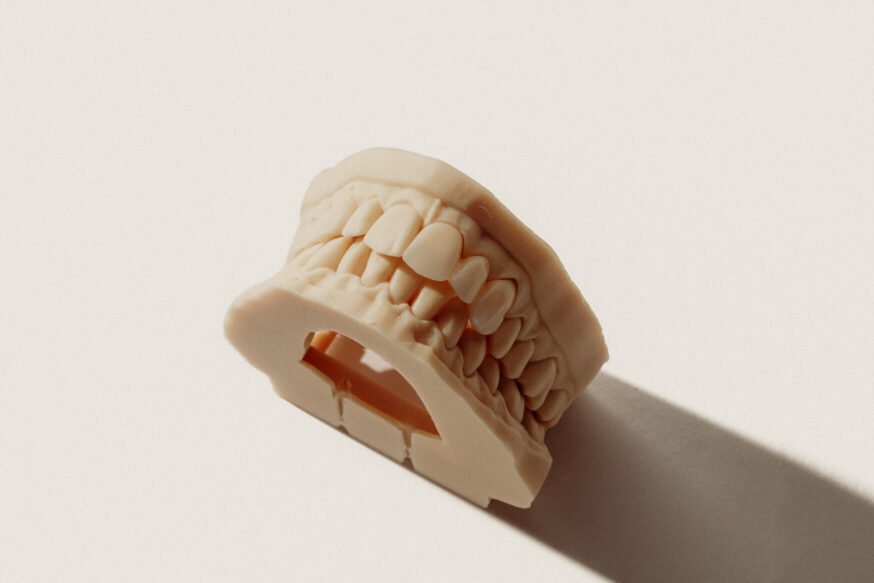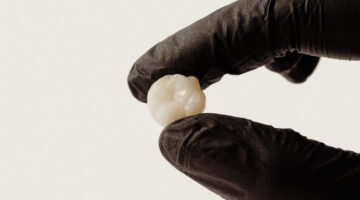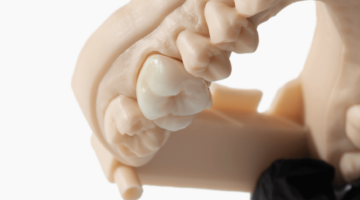You’ll find, when picking a material for tooth restoration, that we’re living in an age of abundance as dentists and dental patients. Porcelain has been a go-to for decades, but is slowly being replaced as the material of choice by a few other options, notably among them eMax and Zirconia. So which is better: eMax vs. zirconia?
Firstly, both are reliable, modern, and beautiful in restorations. eMax is a lithium disilicate piece, and monolithic. This means it’s a single piece of ceramic that is filed and cut down to fit when replacing the missing and restored teeth. Zirconia is a metal oxide, meaning it, too, is ultra-durable (more so even), and often available as one big “monolithic” piece.
Both are good and can handle a great deal of wear and tear, especially compared to the porcelain of the past. So, when it’s time to fix decaying, cracked, or missing teeth, here’s the finer points on two of the most popular, durable, and aesthetically pleasing materials options on the market.
What are eMax crowns?
eMax is a name for a line of crowns made of ultra-, ultra-durable porcelain called a lithium disilicate. The material process makes eMax much stronger than traditional porcelain and nearly all ceramic competitors. Additionally, the material itself is great for bonding—it can attach to metal appliances and inserts as well as existing tooth structure. And the best part? In addition to uncompromised durability, eMax crowns look almost identical to the real deal. They are possibly the best visual tooth mimic on the market widely available.
Pros of eMax crowns
The major benefit of eMax is the look. eMax is more than an overall aesthetically pleasing option—it’s possibly the best. They are also less prone to chipping than other options, they don’t cause allergies, and they last for an extended period of time. These benefits—plus the look—makes them a terrific option for the anterior teeth that are most visible in smiles.
Cons of eMax crowns
The main drawback when comparing eMax to zirconia and other materials? Cost. eMax crowns are expensive. For patients with a tighter budget (or more than one or two teeth to replace), the expense can be prohibitive. But for single-tooth dental implants, eMax perhaps can’t be beat.
eMax & Zirconia crowns with Dandy
Dandy offers a variety of zirconia and eMax crowns for all uses. Explore all the crown and bridge materials offered by Dandy labs!
What are zirconia crowns?
Zirconia crowns are made of a translucent metallic oxide that, like eMax, does a great job approaching the look of natural teeth while still providing unbelievable toughness and durability.
Pros of zirconia crowns
Zirconia crowns are relatively cost-effective options, and much more durable and resilient than porcelain. They are biocompatible and won’t cause reactions, stand the test of time (relatively speaking), and do incredible work covering stained and off-color teeth.
Cons of zirconia crowns
Similar to eMax and other modern, ultra-durable materials, zirconia can sometimes be too strong: those who have strong jaws and/or grind their teeth at night may find that a zirconia crown could do minor damage to other, opposing teeth. Otherwise, however, zirconia is a terrific option that is quickly helping make porcelain fused to metal crowns a thing of the past for posteriors.
Zirconia vs. eMax crowns
Both are major materials-science advances that are helping push modern dentistry forward, and have given hundreds of thousands of patients healthier, happier, and more resilient smiles. But really: which one’s the better choice: eMax or zirconia?
Durability — Zirconia
When it comes to material strength, Zirconia crowns are a bit more durable than eMax. Because of this, dentists often recommend zirconia crowns for back teeth — it is a good idea to replace the cracked, missing, and otherwise unhealthy molars of patients in need with zirconia. Of course, this is a relative comparison, as eMax crowns are still more durable than many traditional options, like porcelain.
Aesthetics / Appearance — eMax
Both zirconia crowns and eMax have a degree of translucency, and are better at tooth-matching than their predecessors by a pretty significant factor, however: eMax are often considered the best-looking crown material on the market. For matching shades of existing teeth, or providing a natural “gradient” look—with most labs*—you can’t beat eMax. *Dandy offers an Aesthetic Zirconia. The milling process used to make either material a customized tooth crown combines the benefits of digital, intraoral scanning with a CAD/CAM milling process that creates perfectly shaped teeth, as well. Zirconia is a great aesthetic option, but for anterior tooth replacement the matching of eMax are second to none.
Function — Case-dependent
The functionality of a tooth replacement depends entirely on the needs and variables related to the case and the patient. Because eMax crowns are a bit better at aesthetically matching real teeth, they’re typically a better choice for anterior teeth. And because eMax is pricier (and somewhat less durable) than zirconia, the case can also be made for zirconia being a better molar replacement, especially for patients who have strong bites and/or grind their teeth.
Cost — Quality per dollar: draw
And of course, when it comes to aesthetics, you get what you pay for. (Or, conversely: the best costs the most.) Between eMax and zirconia, neither is the cheapest option, but either of these materials on the case that suits them is worth every penny. There are very few occasions, other than paying out-of-pocket, where other materials would be preferred.
eMax vs. zirconia: which is the better crown material?
For every mouth, patient, and cracked or missing or unhealthy tooth, there will be dozens of options for treatment, from “old-fashioned” gold crowns to our more modern, versatile options like eMax and Zirconia. And it is not really an overcrowded marketplace of options, because every case has many avenues of treatment that end with happy smiles and healthy teeth. So the difference in the particular cases determines the better options. For single-tooth, otherwise healthy bites where the patient can afford eMax, the aesthetic matching to existing teeth (and customization precision like with Dandy’s digital dental lab) makes perfect sense. A single implant could last for awhile with near-perfect tooth-matching. If the patient needs a full bridge or posterior crowns you should probably opt for the durability of zirconia. The key takeaway should be: with digital dentistry advancements and do-it-all labs like Dandy, tooth replacement—and material selection—has never been both easier and more personalized. Add incredible advancements like milled eMax and Zirconia crowns, and you can have a patient experience that’s not just less intimidating, but also faster, better, and healthier. The real answer to which is better? “Yes.”
Subscribe to our newsletter!
We send emails on Tuesdays. Keep an eye out for the next one!



